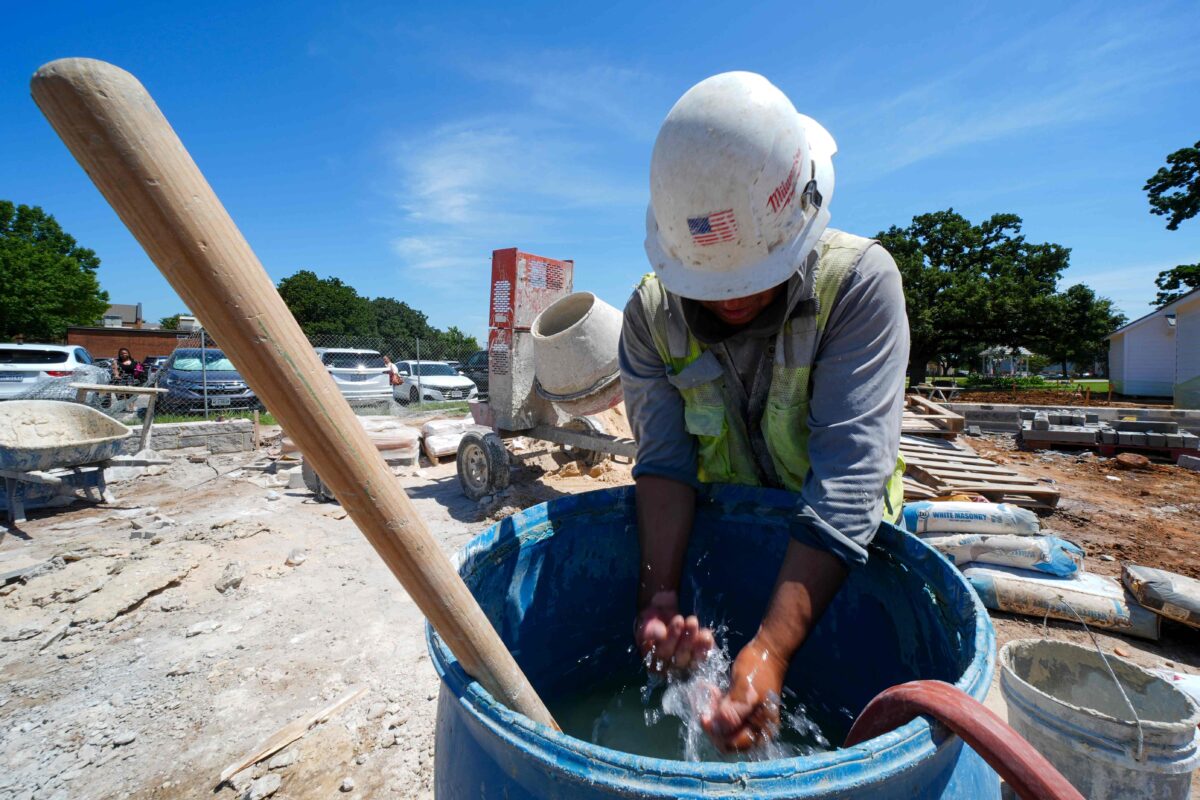Overview:
- States with heat standards show fewer worker injuries, according to new research.
- The study from the Harvard and George Washington University public health schools found 28,000 injuries attributable to heat in 2023.
- By examining the likelihood of workplace injuries on hot days, researchers are revealing other hidden costs of extreme heat — for both laborers and employers.
By FRIDA GARZA
Grist
This story was originally published by Grist. Sign up for Grist’s weekly newsletter here.
A new study confirms that commonsense workplace protections from extreme heat — water, shade, breaks — help save workers from being injured on the job.
The finding — something labor and climate advocates have long known and pushed for in public policy — comes just as the federal government shutdown may have suspended the Occupational Safety and Health Administration’s lengthy rulemaking process to create the U.S.’s first-ever nationwide heat standard for workers.
Some experts now fear that the agency, which ordinarily takes about seven years on average to establish new rules, will face further delays.
In order to calculate the risk of injury on hot days, researchers from the public health schools at Harvard University and George Washington University utilized OSHA’s database for workplace injuries, pulling nearly 900,000 cases from 2023.
They found that 28,000 injuries were attributable to heat, and that workers in all industry sectors, including those who mostly work indoors, were impacted. The study, published this week, also found that the risk for injury starts to increase when the heat index, a measure of how temperatures really feel to the human body, reaches 85 degrees Fahrenheit, and then becomes even more likely once the heat index passes 90.
“This study elegantly confirms what all of us have experienced,” said Charlotte Brody, vice president of health initiatives at the BlueGreen Alliance, a coalition of labor and environmental groups. “When it gets really hot, it’s hard to do hard work safely. And the hotter it gets, the more clumsy and fuzzy thinking we get.”
‘First big picture look’ at state heat standards
Much of the prior research on the impact of heat on workers has focused on illnesses caused by exposure to high temperatures — such at heat stroke, fatigue, nausea, dizziness, and vomiting. By examining the likelihood of workplace injuries on hot days, researchers are revealing other hidden costs of extreme heat — for both laborers and employers.
“It’s very clear that heat causes more than simply heat illness and unfortunately heat fatalities,” said David Michaels, one of the authors of the study and a professor at the Milken Institute School of Public Health at George Washington University.
“But it also causes thousands of injuries every year. When you’re working in heat, you can much more easily make mistakes.” Michaels also served as the head of OSHA from 2009 to 2017.
“The numbers on this one are a little bit eye-opening,” said Juanita Constible, a senior advocate for environmental health at the Natural Resources Defense Council, who described this study as the first national look at the impact of heat on workplace injury. (Barrak Alahmad, lead author of the study and senior research scientist at the Harvard T.H. Chan School of Public Health, said his team was not aware of any other nationwide study that covered the contiguous United States.)
Constible added that worker injuries hurt employers’ pocketbooks in the form of workers’ compensation claims. Recently, the insurance company Liberty Mutual found that worker injuries cost employers more than $58 billion in 2021.
Crucially, the study also found that states that have enacted their own heat standards to protect workers had a lower risk of injury on hot days compared to states that lack such rules. Constible considered this “the most critical piece of the paper.” She added, “It’s the first big picture look that we have at how well standards are working to reduce these kinds of traumatic health problems.”
The idea that working on hot days may not just be uncomfortable, but also potentially dangerous, is likely not surprising to labor and climate advocates. It’s also probably unsurprising to anyone who has had to work on hot days.
“People know it intuitively when they’re out mowing their lawn for a few hours and they get really hot and miserable, right?” said Constible. “It impairs our judgment, makes our hands slippy, affects our posture.”
With time, the human body can become acclimated to hotter temperatures. But employers often use this to justify not providing basic necessities like water, rest breaks, and shade to workers, said Brody. “This study shows that hot weather creates more workplace injuries and that a commonsense heat rule matters,” she said.
Shutdown complicates OSHA rulemaking on heat
OSHA is currently in the process of receiving final comments from parties that testified on a Biden-era proposal for a national heat rule earlier this year. But the federal government shutdown could potentially drag on or complicate this phase. “I think we can expect that this will lead to delays in promulgating an OSHA rule,” said Brody.
Constible, who testified at an OSHA hearing on the proposed heat rule in June, said that what the ultimate impact of the shutdown will be is unclear. For now, the online portal through which she and others can submit final comments to the agency remains active. Since the shutdown began last Wednesday, OSHA has not extended its deadline for comments, which is currently Oct. 30.
But could a prolonged federal funding shortage change that? The online portal is, after all, just a website, that “like all the others, requires maintenance,” said Constible. Without that, “the question is: Will it continue to work?” She noted that there is an option to email comments to the agency. “If the deadline does not get extended and the website’s not working, then we’ll just start emailing. Or I’ll walk down to OSHA’s office.”
Grist’s emailed request to OSHA for comment returned an automatic message citing the government shutdown as a reason why the account is not being monitored.
Even if the current heat standard proposal continues to move through OSHA without a shutdown-related delay, Constible and Brody expressed concern it may ultimately be watered down — due to industry groups who say following standards is expensive and burdensome and President Donald Trump’s deregulatory agenda.
Michaels, however, argued that, “if the Trump administration recognizes the importance of protecting workers, they will issue a strong standard.”
This article originally appeared in Grist at https://grist.org/business/simple-way-to-protect-workers-extreme-heat-osha/.
Grist is a nonprofit, independent media organization dedicated to telling stories of climate solutions and a just future. Learn more at Grist.org
MORE REPORTING ON HEAT FROM PLANET DETROIT
Heat waves challenge Detroit renters: Should city legislate air conditioning?
A Detroit apartment building’s air conditioning failure raises questions about what the city can do to protect renters from heat as the climate warms.
Detroit roasts as heat index reaches 104 degrees: When will temps fall?
Detroit’s heat index was projected to reach 104 degrees over the course of Monday. The heat index measures what the temperature feels like to the human body when relative humidity is combined with the air temperature.
How can pregnant people stay cool during extreme heat?
As climate change intensifies, pregnant individuals face heightened risks from extreme heat, a new Climate Central report says.





